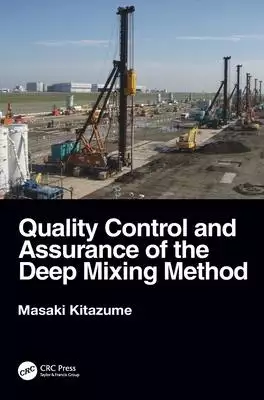Pneumatic control的問題,透過圖書和論文來找解法和答案更準確安心。 我們找到下列包括價格和評價等資訊懶人包
Pneumatic control的問題,我們搜遍了碩博士論文和台灣出版的書籍,推薦寫的 New Trends in Medical and Service Robotics: Mesrob 2021 和Kitazume, Masaki的 Quality Control and Assurance of the Deep Mixing Method都 可以從中找到所需的評價。
這兩本書分別來自 和所出版 。
國立臺灣科技大學 機械工程系 林其禹所指導 Anton Royanto Ahmad的 COMPREHENSIVE DESIGN OF MULTIPLE AXIS FORCE/MOMENT SENSORS (2021),提出Pneumatic control關鍵因素是什麼,來自於。
而第二篇論文國立臺灣科技大學 機械工程系 林顯群所指導 陳品勳的 二段式真空產生器之參數分析與優化應用 (2021),提出因為有 二段式真空產生器、真空度、漸縮漸擴主噴嘴、優化模型、能源使用效率的重點而找出了 Pneumatic control的解答。
New Trends in Medical and Service Robotics: Mesrob 2021

為了解決Pneumatic control 的問題,作者 這樣論述:
Chapter 1: Serious Games Strategies with Cable-Driven Robots for Rehabilitation Tasks.- Chapter 2: A Cable-Robot System for Promoting Healthy Postural Stability and Lower-Limb Biomechanics in Gait Rehabilitation.- Chapter 3: Designing a Robotized System for Rehabilitation Taking Into Account Anth
ropological Data of Patients.- Chapter 4: Design Optimization and Dynamic Control of a 3-d.o.f. Planar Cable-Driven Parallel Robot for Upper Limb Rehabilitation.- Chapter 5: Novel design of the ParReEx-elbow parallel robot for the rehabilitation of brachial monoparesis.- Chapter 6: Development of a
New Knee Endoprosthesis and Finite Element Analysis of Contact Stresses.- Chapter 7: Observer based sliding mode control for a knee exoskeleton.- Chapter 8: Design and motion simulation of a new exoskeleton leg mechanism.- Chapter 9: Use of Pneumatic Artificial Muscles in a Passive Upper Body Exoske
leton.- Chapter 10: Laser-induced breakdown spectroscopy combined with artificial neural network for pre- carbonization detection in laserosteotomy.- Chapter 11: Development and Evaluation of a Force-Sensitive Flexure-Based Microgripper Concept.- Chapter 12: Universal Mechanical Interface for Surgic
al Telemanipulation using Conventional Instruments.- Chapter 13: Volume Rendering-based Patient Registration for Extended Reality.
Pneumatic control進入發燒排行的影片
近代史上,有哪些改變你生活的發明呢?
看完影片,除了知道發明的年代與國籍之外
還可以學英文喔!
小額贊助安撫蒟嫂 https://p.ecpay.com.tw/E2494
本單元出現的單字
1842 冰箱Refrigerator US
1852 客用電梯Passenger Elevator US
1876 有線電話Telephone US
1885 摩托車Motorcycle Germany
1888 充氣輪胎Pneumatic Tire UK
1891 電扶梯Escalator US
1901 吸塵器 Vacuum machine UK
1902 空調機Air conditioning US
1903 飛機Airplane US
1903 現代汽車Car US
1903 衣架Hanger US
1906 動畫Animation US
1907 洗衣機Washing Machine US
1913 工廠流水線Assembly line US
1913 胸罩 Bra US
1914 不鏽鋼Stainless Steel UK
1915 口紅Lipstick US
1915 聲納Sonar France
1920 吹風機Hair dryer US
1923 紅綠燈Traffic light US
1923 黑白電視Black and white Television Russia
1926 空氣罐Aerosol can Norway
1928 錄音帶Audio Tape Germany
1938 原子筆Ballpoint pen Hungary
1939 直升機Helicopter Russia
1944 防曬乳Sunscreen US
1944 彩色電視Color Television US
1945 微波爐Microwave Oven US
1946 比基尼Bikini France
1948 黑膠唱片Long playing record US
1948 魔鬼氈Velcro Switzerland
1949 樂高Lego Denmark
1950 口服避孕藥Oral Contraceptives US
1950 信用卡Credit Card US
1950 遙控器Remote control US
1950 錄影帶Video tape US
1950 拋棄式尿布Disposable Diapers US
1952 安全氣囊Air bag US
1952 商品條碼Barcode US
1952 自動心臟體外去顫器Automated External Defibrillator US
1955 電腦 Computer US
1958 懷孕用的超音波影像Ultrasound imaging UK
1958 雷射Laser US
1959 汽車安全帶Seat belt Sweden
1962 發光二極體Light emitting diode US
1963 液晶銀幕Liquid crystal display US
1963 滑鼠Mouse US
1968 自動櫃員機Automated teller machine US
1969 錄放影機video cassette recorder Japan
1969 煙霧偵測器Smoke Detector US
1969 網路Internet US
1969人類登陸月球了Moon Landing US
1971電子郵件 E-mail US
1972 斷層掃描CAT scan UK
1974 個人電腦Personal Computer US
1978 人工受孕In Vitro fertilization UK
1980 光碟Compact dick Japan
1982 攝影機Camcorder Japan
1983 筆記型電腦Laptop US
1984 現代行動電話Mobile Telephone US
1984 DNA的密碼 DNA fingerprinting UK
DNA / Deoxyribonucleic Acid
1986 數位攝影機Digital Camera Japan
1989 全球資訊網World Wide Web UK
1994 全球衛星定位系統Global Positioning System US
1995 數位影音光碟Digital Video Disk Japan
1997 威爾鋼Viagra US
1999 MP3 US
COMPREHENSIVE DESIGN OF MULTIPLE AXIS FORCE/MOMENT SENSORS
為了解決Pneumatic control 的問題,作者Anton Royanto Ahmad 這樣論述:
Industrial automation heavily relies on force sensors. Different applications require different kinds of force sensors in terms of their specification and the number of the axis being sensed. A comprehensive method, from structure to the internal data acquisition board that could build any customiz
ed force sensor, is being presented in this thesis. Optimization process to get the most sensitive force sensor with a wide range of specifications. Strain gauges are configured with the revolutionary arrangement to get maximum accuracy and minimum interference error. An integrated data acquisition
board essential to condition the signals also present excellent performance. The three-axis and six-axis force sensors are tested and show significant improvement. The results show a measurement error of 0.78%, and the most significant interference error is 1.61% for the three-axis. The six-axis for
ce sensor shows a maximum measurement error of 1.46% and a maximum interference error of 0.59%.
Quality Control and Assurance of the Deep Mixing Method

為了解決Pneumatic control 的問題,作者Kitazume, Masaki 這樣論述:
Masaki Kitazume graduated from Tokyo Institute of Technology in 1979, and obtained his Master of Engineering in 1981. Then he joined the Port and Harbour Research Institute, Ministry of Transport and has been the head of the Soil Stabilization laboratory and has worked on the interaction of improved
ground and soft ground. In 1994, he got a Doctor of Engineering from Tokyo Institute of Technology on the design of stability of Deep Mixing improved ground. In 2011, he was invited to become professor of the Department of Civil and Environmental Engineering, Tokyo Institute of Technology.He has pu
blished many papers, mainly on the geotechnical aspects of soil stabilization, ground improvement and centrifuge model testing. He also published three books from Balkema Publishers and Taylor & Francis, on Deep Mixing Method, Sand Compaction Pile Method and Pneumatic Flow Mixing Method. He was awar
ded the Geotechnical Engineering Development award from the Japanese Society of Soil Mechanics and Foundation Engineering in 1992, the Minister of Transport Award in 2000, and Continuing International Contribution Awards, Japan Society of Civil Engineers in 2006, Geotechnical Engineering Research Ac
hievements Award, the Japanese Society of Soil Mechanics and Foundation Engineering in 2018, and Telford Premium Prize, ICE Awards in 2019.
二段式真空產生器之參數分析與優化應用
為了解決Pneumatic control 的問題,作者陳品勳 這樣論述:
噴射真空產生器因體積小且產生真空方便之特性,在搬運精密及不規則形狀之物品具有優勢,故於自動化生產之應用十分廣泛。本數值研究模擬分析二段式真空產生器之流場及性能參數,包括吸入量、消耗量、真空度以及第二段最高真空度;並執行系統化之參數分析工作,包括主噴嘴、連接管、與混合排氣管之幾何參數對其性能之影響。最後整理參數分析之結果,並據以設計出兩款優化真空產生器,其中一款是以性能為目標的優化模型,另一為符合實際性能需求之最短長度真空產生器,可使其降低成本且安置更加彈性。經由數值計算與參數分析之結果顯示,原始二段式真空產生器之長度為55.5mm,達到真空度-90KPa之供給壓力為0.43MPa,此壓力下之
吸入量為45.2L/min、能源效率為20.1%,至於真空度峰值-94.2KPa則須供給壓力0.55MPa。而本文之最小體積模型之長度僅有35.5mm,於各壓力下之性能與原始模型相近,而其能源效率為20.6%;另外,此模型在供給壓力0.45MPa即可達到真空度峰值,這表示最小體積模型在運作更節省能源,且具有方便安置與成本優勢。至於另一款性能優化模型之長度為54.5mm,此模型在各壓力下所有性能皆優於原始模型,特別是在供給壓力0.4MPa時,此優化模型就已達到真空度-90KPa,且所產生之吸入量為49.0 L/min、能源效率為24.8%,明顯地較原始真空產生器高出許多;這代表性能優化模型除具有
節省能源之優勢外,還能更快地達到所需之真空度並提供更多的吸入量。綜合歸納來說,本研究建立一套系統化的設計流程,也取得各重要參數對真空產生器性能之影響,並藉此成果規劃出兩款優化模型,以滿足特定需求之二段式真空產生器的應用。